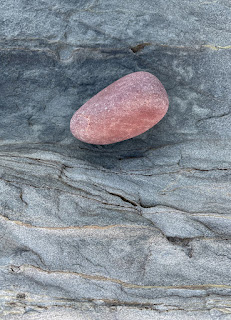"[Why is the sky blue?] ... It’s a question every toddler asks, but it is also one that most great scientists since the time of Aristotle, including da Vinci, Newton, Kepler, Descartes, Euler, and even Einstein, have asked... One of the things I like most about this explanation—beyond the simplicity and overtness of the question itself—is how long it took to arrive at correctly, how many centuries of effort, and how many branches of science it involves.
Aristotle is the first, so far as we know, to ask the question about why the sky is blue, in the treatise On Colors; his answer is that the air close at hand is clear and the deep air of the sky is blue the same way a thin layer of water is clear but a deep well of water looks black. This idea was still being echoed in the 13th century by Roger Bacon. Kepler too reinvented a similar explanation, arguing that the air merely looks colorless because the tint of its color is so faint when in a thin layer. But none of them offered an explanation for the blueness of the atmosphere. So the question actually has two, related parts: why the sky has any color, and why it has a blue color.
...
The sky is blue because the incident light interacts with the gas molecules in the air in such as fashion that more of the light in the blue part of the spectrum is scattered, reaching our eyes on the surface of the planet. All the frequencies of the incident light can be scattered this way, but the high-frequency (short wavelength) blue is scattered more than the lower frequencies in a process known as Rayleigh scattering, described in the 1870’s. John William Strutt, Lord Rayleigh, who also won the Nobel Prize in physics in 1904 for the discovery of argon, demonstrated that, when the wavelength of the light is on the same order as the size of the gas molecules, the intensity of scattered light varies inversely with the fourth power of its wavelength. Shorter wavelengths like blue (and violet) are scattered more than longer ones. It’s as if all the molecules in the air preferentially glow blue, which is what we then see everywhere around us.
Yet, the sky should appear violet since violet light is scattered even more than blue light. But the sky does not appear violet to us because of the final, biological part of the puzzle, which is the way our eyes are designed: they are more sensitive to blue than violet light.
The explanation for why the sky is blue involves so much of the natural sciences: the colors within the visual spectrum, the wave nature of light, the angle at which sunlight hits the atmosphere, the mathematics of scattering, the size of nitrogen and oxygen molecules, and even the way human eyes perceive color. It’s most of science in a question that a young child can ask."




































